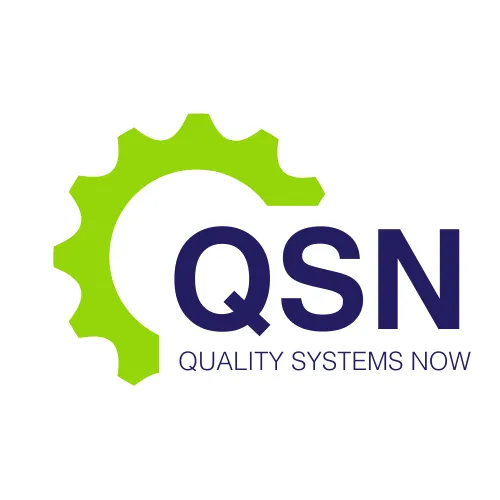NEWS

Common Mistakes That Slow Regulatory Approvals—And How to Avoid Them
For therapeutic goods manufacturers, biotechnology companies, and testing laboratories, navigating the regulatory landscape can be complex and challenging. Delays in regulatory approvals are not only costly but can also jeopardise market access, investment opportunities, and patient availability. While the scientific innovation behind a medicine, medical device, or diagnostic is critical, regulatory success depends on attention to detail, process adherence, and strategic planning.
At QSN Academy, we work with organisations to identify and mitigate common pitfalls that slow regulatory approvals. This article highlights the most frequent mistakes that delay submissions to authorities such as the TGA, FDA, and EMA, as well as certification processes under ISO 13485 and GMP frameworks. Importantly, it also provides practical guidance on how to avoid these issues, enabling smoother, faster regulatory pathways.
Download our Free Ebook From Lab Bench to Market Launch
Mistake 1: Insufficient Understanding of Regulatory Requirements
One of the most common reasons for delayed approvals is failing to fully understand the applicable regulatory requirements for a product or market. Companies often assume that their scientific data or technical documentation alone is sufficient for submission.
How to Avoid It:
Engage early with regulators: Seek pre-submission meetings or advice to clarify expectations.
Map requirements: Create a regulatory roadmap outlining all necessary documents, testing, and compliance obligations.
Stay current: Monitor changes in GMP guidelines, ISO standards, and jurisdiction-specific requirements to avoid non-compliance due to outdated practices.
Understanding the regulatory landscape early reduces the risk of incomplete submissions and prevents time-consuming back-and-forth with authorities.
Mistake 2: Poor Documentation and Data Integrity
Regulatory authorities expect submissions to be complete, accurate, and traceable. Missing data, inconsistent records, or lack of documentation for key processes are frequent causes of delays. Issues with data integrity—such as unvalidated electronic systems, incomplete laboratory notebooks, or unapproved changes—can result in major regulatory observations.
How to Avoid It:
Implement robust quality systems: Ensure SOPs cover record-keeping, electronic systems validation, and change control.
Conduct internal audits: Regularly review documentation for completeness and accuracy.
Train staff: Emphasise data integrity principles and the importance of contemporaneous, traceable records.
Well-maintained documentation not only supports faster approvals but also demonstrates organisational competence and regulatory readiness.
Mistake 3: Inadequate Risk Management
Regulators expect manufacturers to identify, assess, and mitigate risks throughout a product’s lifecycle. Failing to document risk assessments or relying on incomplete analyses can result in requests for additional information and delays in approval.
How to Avoid It:
Develop structured risk management files: Align with ISO 14971 for medical devices or ICH Q9 for medicines.
Link risk to controls: Ensure that every identified risk has corresponding mitigation, monitoring, or control measures.
Update continuously: Incorporate new information from clinical studies, post-market surveillance, or manufacturing data.
A strong, documented risk management approach reduces regulatory questions and builds confidence in product safety and efficacy.
Mistake 4: Neglecting Regulatory Strategy Early in Development
Many companies focus solely on scientific development and only consider regulatory strategy near the end of product development. This reactive approach often leads to missing critical studies, incomplete validation, or insufficient documentation for submissions.
How to Avoid It:
Integrate regulatory planning into R&D: Identify regulatory requirements at the earliest stages of design and development.
Use checklists and submission templates: Plan studies, testing, and documentation to meet regulatory expectations.
Consult experts: Regulatory consultants can identify gaps and ensure submissions are complete and structured.
Proactive planning streamlines the submission process and reduces the likelihood of regulatory delays.
Mistake 5: Inconsistent Quality Systems
Regulators expect evidence of mature, consistent quality systems across all functions. Inconsistencies—such as differing procedures across departments, incomplete SOPs, or unverified processes—can result in extensive requests for clarification or corrective actions.
How to Avoid It:
Standardise processes: Ensure SOPs, templates, and procedures are consistent across departments.
Implement cross-functional reviews: Verify that all functions align with regulatory and quality requirements.
Monitor compliance: Conduct regular internal audits and management reviews to maintain system integrity.
A harmonised, well-maintained quality system provides confidence that the organisation can reliably deliver compliant products.
Mistake 6: Failing to Address Previous Regulatory Feedback
When submitting products, regulators may provide feedback on prior submissions, inspections, or deviations. Ignoring or inadequately addressing these points can slow approvals significantly.
How to Avoid It:
Maintain a regulatory history file: Track feedback from all authorities and ensure previous observations are addressed.
Implement corrective and preventive actions (CAPA): Document how issues were resolved and measures taken to prevent recurrence.
Incorporate lessons learned into submissions: Demonstrate responsiveness and proactive management.
Regulatory authorities are more likely to approve products when prior concerns have been systematically addressed.
Mistake 7: Incomplete Post-Market Planning
Regulators increasingly expect submissions to include plans for post-market monitoring, pharmacovigilance, and risk management. Failure to provide post-market surveillance plans or procedures can delay approvals.
How to Avoid It:
Develop post-market plans early: Include procedures for adverse event reporting, trend analysis, and continuous monitoring.
Integrate post-market activities into quality systems: Ensure CAPA, risk management, and change control processes cover post-market scenarios.
Train staff: Ensure responsible personnel understand reporting requirements and procedures.
Well-prepared post-market plans reassure regulators that product safety and quality will continue after launch.
Contact Us to QSN Academy
Regulatory approvals are influenced by many factors beyond the scientific merit of a product. Common mistakes such as misunderstanding requirements, poor documentation, inadequate risk management, lack of early regulatory strategy, inconsistent quality systems, failure to address previous feedback, and insufficient post-market planning frequently delay approvals.
Avoiding these pitfalls requires a proactive, structured approach that integrates regulatory thinking into every stage of product development and operational processes. Organisations that invest in robust quality systems, staff training, and early regulatory planning are better positioned to achieve faster, smoother approvals and maintain compliance throughout the product lifecycle.
QSN Academy supports therapeutic goods manufacturers, biotechnology companies, and testing laboratories in identifying regulatory pitfalls, implementing best practices, and building staff competence to navigate complex regulatory environments efficiently. By learning from common mistakes and adopting preventive strategies, organisations can reduce delays, enhance regulatory confidence, and bring high-quality products to market successfully.
